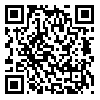Volume 5, Issue 4 (Occupational Medicine Quarterly Journal 2013)
tkj 2013, 5(4): 52-59 |
Back to browse issues page
, h.mihanpour@gmail.com
Abstract: (8108 Views)
Background: expert judgments in combination with exposure models are used extensively in estimation of inhalational exposures in occupational environments. However, their reliability is not as good as conventional air sampling methods. The aim of this study was to investigate the applicability, weaknesses and strengths of Bayesian analysis in combination with SSA (Structured Subjective Assessment Method) and MEASE (Material Estimated and Assessment of Substance Exposure) and its comparison with air sampling data.
Methods: the analytical cross sectional –study performed on a weighting, mixing and packing task in an inorganic processing industry. Air samples were taken and analyzed by gravimetric methods. Inhalation exposures were estimated by 3 occupational hygienists. Descriptive and Bayesian analysis were performed on data.
Results: all three methods guaranteed that the exposure is above exposure limit. There was no difference between means reported in methods (p=0.435). However, SSA had higher variability in comparison with sampling. There was no difference between direct sampling and MEASE variability. Use of SSA as a prior in Bayesian analysis gives more conservative than MEASE method (category 4: 0.74 vs. 0.54)
Discussion: SSA is a good choice as a prior distribution in Bayesian analysis. MEASE has not good results in comparison with SSA in inhalation exposure assessment. It seems that MEASE needs more validation.
Type of Study: Research |
Subject:
Toxicology
Received: 2013/12/30 | Accepted: 2013/12/30 | Published: 2013/12/30
Received: 2013/12/30 | Accepted: 2013/12/30 | Published: 2013/12/30
| Rights and permissions | |
 |
This work is licensed under a Creative Commons Attribution-NonCommercial 4.0 International License. |


